QCF: Dead Or Alive 5
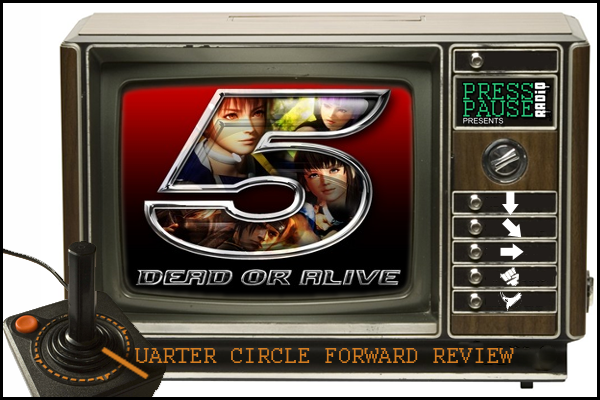
Team Ninja has seen better days. Their recent efforts towards a blockbuster action game failed since Tomonobu Itagaki left after the completed development of Ninja Gaiden II. In the aftermath of Metroid: Other M and chasing after the same goal of Ninja Gaiden 3 to appeal to western sensibilities, Dead or Alive 5 is the latest installment in the storied 3D fighting franchise that aspires to be relevant again in the emergent renaissance of fighting games 2012 has seen.
As was the case with Ninja Gaiden 3, DOA 5 is the first release in the series with no involvement from Itagaki. With the shift of focus Team Ninja took, apprehension was a reasonable response towards any expectations players had towards the end-result. The final product doesn’t exactly propel the franchise forward, but it doesn’t do a lot to regress it either.
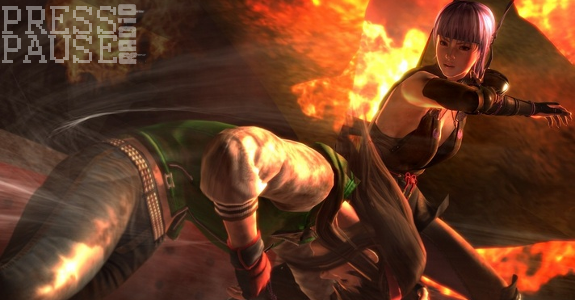
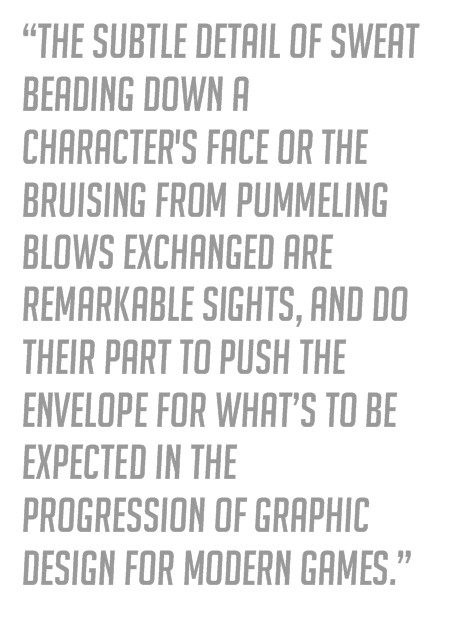 Dead or Alive 5 excels in what the brand does best: Providing tight yet frenetic action that translates to those who can master the technical nuances of its deep fighting mechanics, and those who just love hammering on the punch button and watch stuff happen.
Dead or Alive 5 excels in what the brand does best: Providing tight yet frenetic action that translates to those who can master the technical nuances of its deep fighting mechanics, and those who just love hammering on the punch button and watch stuff happen.
When it comes to developing a style, discovering new characters that resonate more with your methods has more of a bite to it, especially with characters overlooked from past games. Regardless of your veteran character of choice, all the fighting mechanics were tweaked to surprising lengths that may bewilder the most diehard of fans to the series, but not to the extent of alienation. Most tweaks focus on grounding the physics. Moves and movement are less frenzied, which can affect the series staple of heart-pumping action for some, but the action in whole is far from removed in the experience overall.
Team Ninja’s attention to detail with Virtua Fighter cameos is surprisingly spot-on, as they managed to emulate the elements of Virtua Fighter’s formula for the specific characters involved; there's a natural order in making them function within DOA’s formula. Utilizing Akira’s Bujin against Rig’s Taekwondo is one of many match-ups seamlessly executed in a surprisingly effective duality, one that would even spring hope for a crossover with plenty of potential for success.
Critical/Power hitting, a brand new fighting system feature, is unfortunately a rather forgettable one. This new feature does little to significantly tip the odds of victory in your favor, or even change up the flow of fighting for that matter. The major flaws behind these moves are just the sheer odds of success and the circumstantial requirements of executing the move even paying off. With your health bar nearing critical status, usually by means of immanent defeat from dangerously low health, the bar then flashes red, allowing you to charge your power hit. If you successfully connect this move against your opponent, you'll then see an animation of your fighter laying down a flurry of attacks in a pseudo-super move fashion. The times involved with charging these move, however, are mostly unpractical, even against a novice foe; they can easily be interrupted, whether you’re blind-sided by one of the many possible fast attacks that can tossed in your direction. Even hold-countering the attack will simply halt the process altogether. It’s simply too much of a chore to be bothered with, and even the non-super version of this technique, the critical hit, is too sluggish to be effective, and may end up stopping any momentum you had in the match before attempting it.
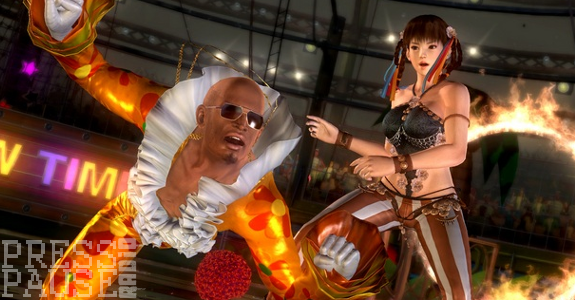
Stages are rather lackluster this time around. It’s a real shame being that stages and the significant role they play in combat are a novel trademark of the DOA series. Gone are the multiple locales with multiple tiers and layers of engagement, instead just simply being regulated to three at most with the most depth to them. Instead, we’re treated to the familiar points of contextual interaction with overdone and out-of-balance environmental hazards. Overall, they're just plain bland and uninspired in comparison to the prior entries. In the past, players could throw opponents out of skyscraper windows as they careened down the side of the building’s broadside terrace, catching a second wind the moment they land. After this, players could drop kick opponents into a power generator that would painfully launch them into the sky. Meanwhile, DOA 5’s stages place you in harm’s way of a circus cable car, or hit with some RPG rocket blast if you’re knocked in the some Middle Eastern shanty in a war-torn city.
The touted “cliffhanger” moments, another new feature specifically in stage interaction where you can cause even more damage to an opponent that’s throttled near the edge of the ring by initiating an attack at just the right moment (or counter this attack if you’re on the receiving end) is only utilized in two stages -- two stages! This demonstrates the laziness in the overall construction for the stage interaction in the other levels.
DOA 5 ups the ante in the visual design department and achieves it well. The subtle detail of sweat beading down a character's face or the bruising from pummeling blows exchanged are remarkable sights, and do their part to push the envelope for what’s to be expected in the progression of graphic design for modern games. Character models are sharp and facial animation is improved to realistic levels that improve over the dead-eyed look that’s plagued the design before. And while the stages are a disappointment (functionally speaking), the graphic detail and vibrancy to the environments impressive by any standards of level display. Itagaki or no Itagaki, the tasteless breast physics that the series is infamous for make a return as well in full form and in spite of Team Ninja’s claims that they were to be toned down for this entry; they’re bouncier than ever before.
Strange enough, there’s an odd amount of focus for Dead or Alive 5 that we haven’t seen before. Stepping on the coattails of the recent Mortal Kombat’s accomplishment with its rich story mode, DOA tries its take by having you play through most of the character roster in order to unfold the events within the story. The events, however, are nonsensical in levels that words could not properly do justice in detailing. Events are portrayed in a vague and ambiguous concept. The flow of time in its In Medias Res design is laughable at best, and quickly followed with annoyance when you see the same cut-scene recycled for the seventh time. The next day, three weeks ago, two hours later -- garbage just happens within a character’s narrative with no logical context to support. In the end, it just makes you wonder why Team Ninja put so much emphasis on the story mode if it was just going to be silly in the outcome.
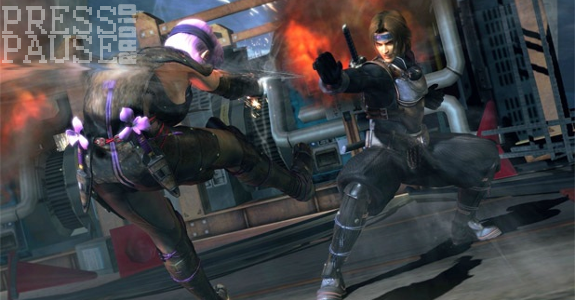
The online modes in DOA 5 are mostly functional. Simple match-ups are easy to locate, even with the most specific of preferences and the same can be said for Rank matches. The lobby is a vast improvement in design over the horrible lobby mode of DOA 4, and takes many cues from contemporaries that are more recent. But in practice, it falls short from hitting the mark. Despite the amount of available lobby rooms and no matter how strong your ping is, your game can significantly lag in play. It’s just flat out unacceptable for how frequent it happens in Lobby mode, and sullies any enjoyment.
Dead or Alive 5 had a lot potential going for it with newer features, but the gross lack of polish holds it back from being anything but amazing. The title is still worth a look for the subtle tweaks and improvement of core fighting mechanics that do well to modernize the franchise in terms of enjoyable play at the basic level.
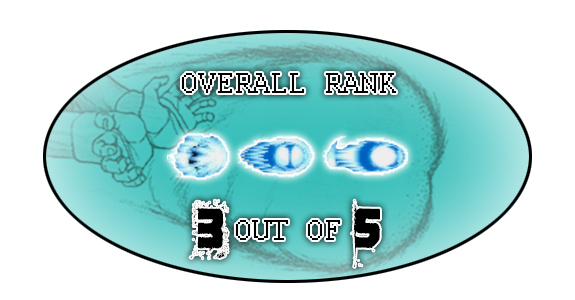
 3D fighting,
3D fighting,  Japanese,
Japanese,  fighting,
fighting,  team ninja | in
team ninja | in  QCF Reviews
QCF Reviews 









